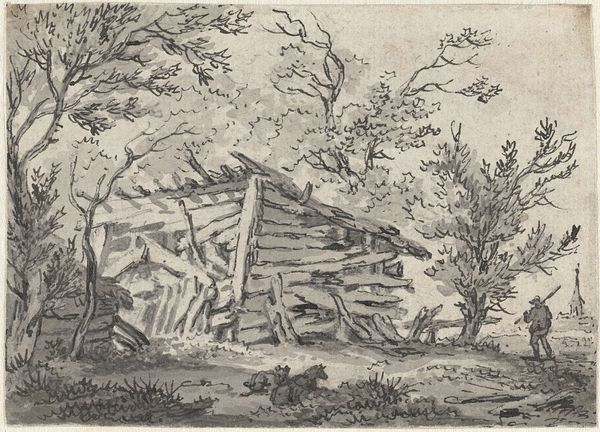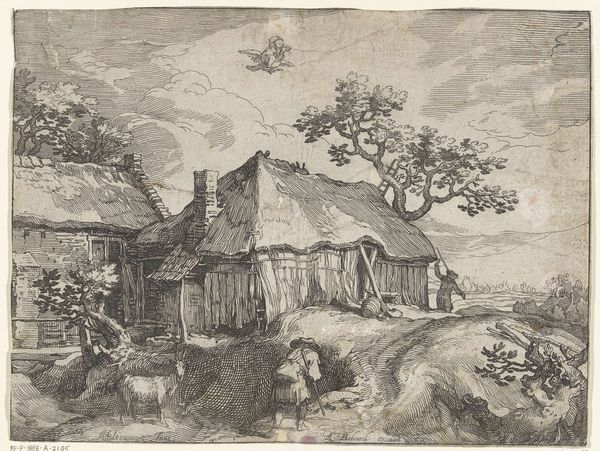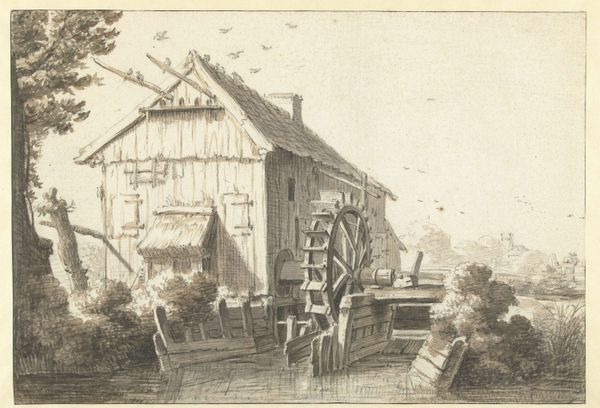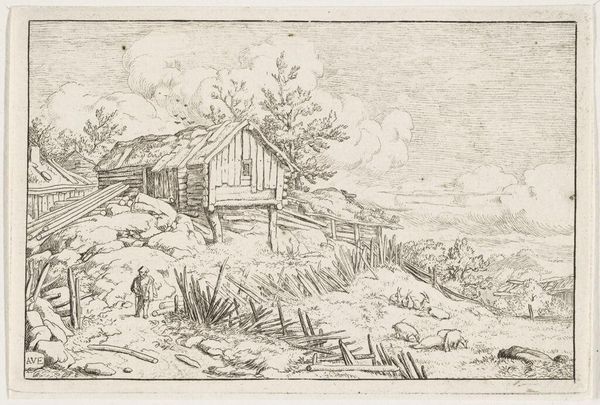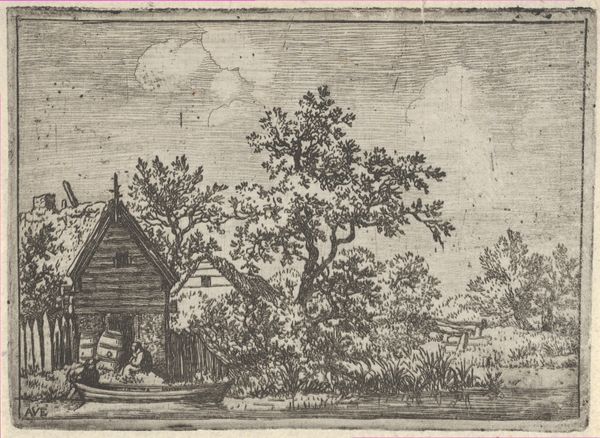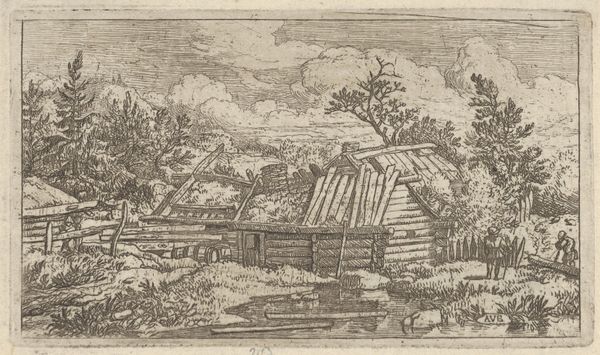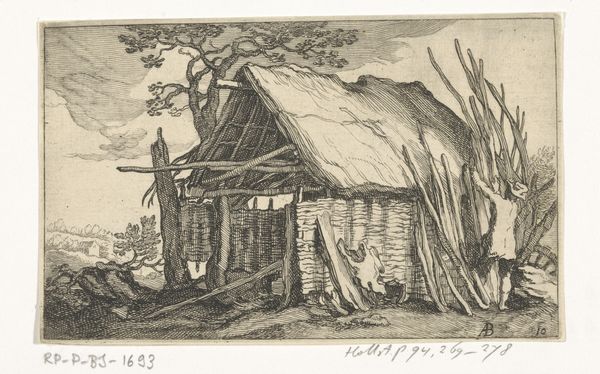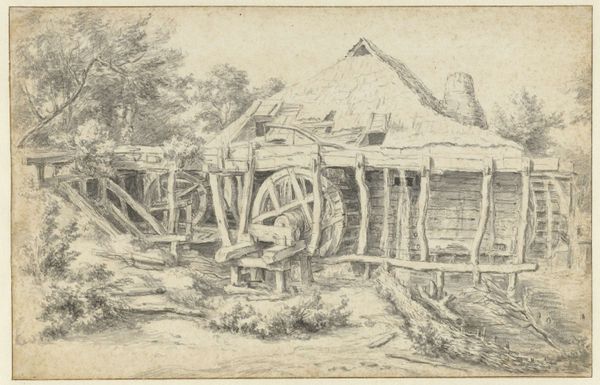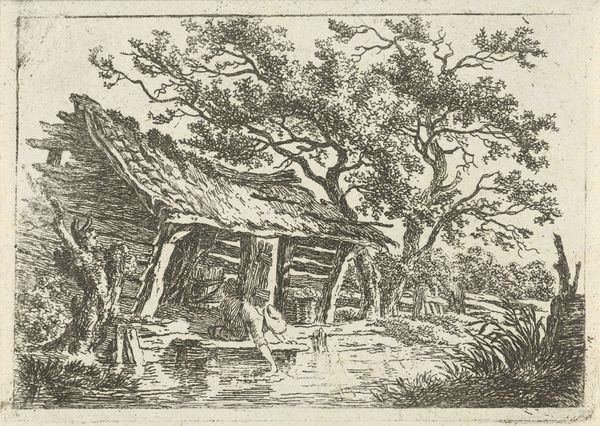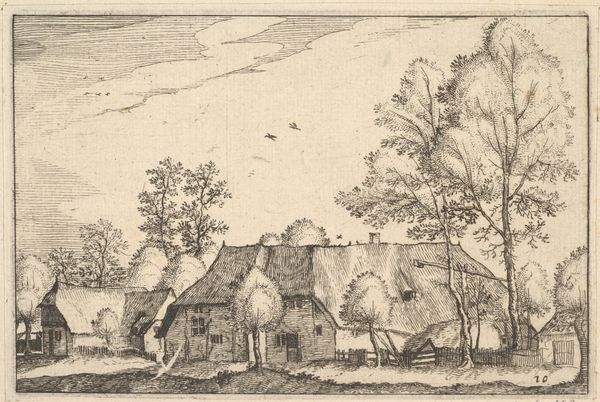
print, engraving
#
quirky sketch
#
narrative-art
#
mechanical pen drawing
# print
#
pen sketch
#
sketch book
#
landscape
#
personal sketchbook
#
sketchwork
#
pen-ink sketch
#
line
#
pen work
#
sketchbook drawing
#
genre-painting
#
northern-renaissance
#
sketchbook art
#
engraving
Dimensions: height 95 mm, width 114 mm
Copyright: Rijks Museum: Open Domain
Curator: Here we have Marcus Gheeraerts the Elder's engraving, "Fable about storks and their religion," created in 1578. What strikes you upon first viewing this scene? Editor: It’s the everyday mixed with the absurd. The meticulous linework depicts a quaint domestic scene, almost idyllic, but then your eye is drawn to the oversized storks perched precariously on the thatched roof. It’s whimsical, yet something feels slightly off-kilter. Curator: Gheeraerts often imbued his work with complex political and religious commentary, and this piece is no exception. The late 16th century was a period of immense upheaval in the Netherlands. The fable alludes to the societal upheaval between the religious beliefs that were often being adopted during the reformation period. Editor: Storks, throughout many cultures, carry the potent symbolism of birth, family, and piety. Here, they seem almost disruptive, even comical. Do you read the “fable” aspect as Gheeraerts commenting on disrupted societal and family norms? Curator: Precisely. The nest atop the building can be seen as an usurpation, referencing how existing traditions and ways of thinking, within the family structure and within religious groups, were often overthrown. What do you see as the significance of rendering this in the medium of engraving, using stark lines? Editor: That crisp, linear style emphasizes clarity and order. Yet, within that rigid structure, there’s a bizarre narrative unfolding, suggesting a deliberate contrast. It brings to mind the visual language that circulated popular beliefs in printed images in the 16th century and creates a lasting emotional resonance to be printed again and again. Curator: That’s a key point. Furthermore, placing this print within Gheeraerts' broader oeuvre, particularly in light of his family's later exile due to religious persecution, underscores its potency. It reflects the precariousness of existing norms. Editor: Examining those stark visual markers – birds, rooftops, people, line work – reinforces the depth in this complex image, reminding me that even seemingly straightforward images have significant encoded meaning if you unpack them and consider them historically. Curator: Absolutely, the symbolism of what could be perceived as quotidian carries powerful meaning in Gheeraerts' "Fable about storks and their religion". It becomes a window into broader concerns of faith, authority, and societal reformation in a fascinating era of visual culture.
Comments
No comments
Be the first to comment and join the conversation on the ultimate creative platform.
